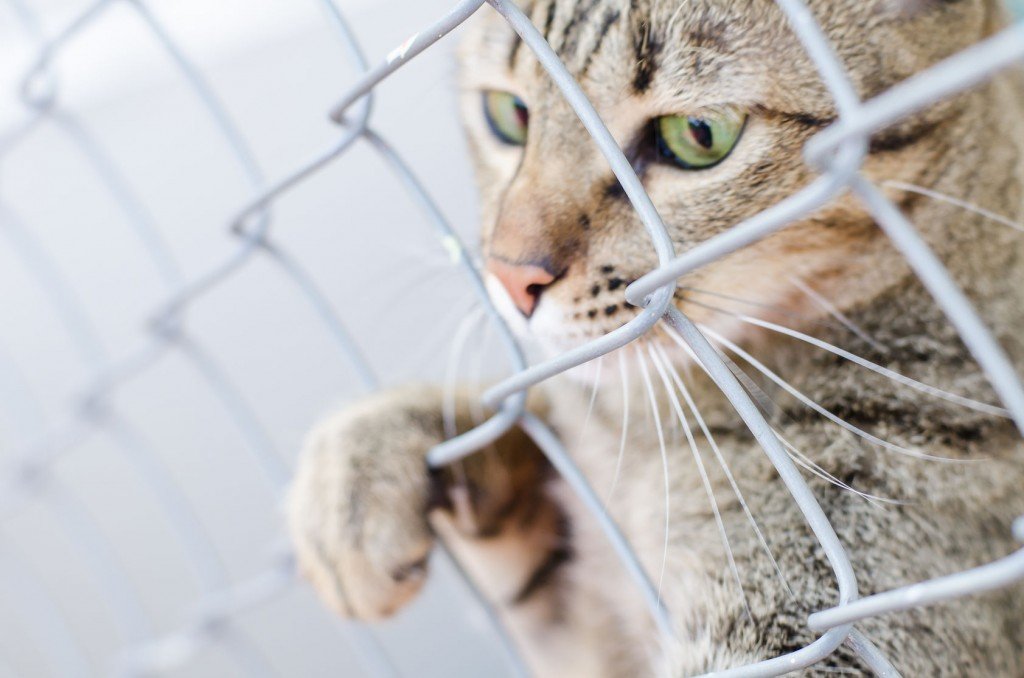Sussanna Czeranko, ND, BBE
The vicious idea that the means is sanctified by the end has been the excuse for every atrocity.
-J. M. Greene, 1904, p. 124Neither the lay public nor physicians have any adequate conception of the vast numbers of innocent living creatures which are daily being cut up alive, mangled, maimed, crucified and slowly tortured to death in vivisection-laboratories.
-J. W. Hodge, 1912, p. 71We cannot sit idly by and allow the continuation of a system that permits men and women to use over 6,000,000 animals every year for experimental work in the medical laboratories of this country.
-Benedict Lust, 1935, p. 52
Medical history has many miraculous feats in its cabinets, as well as its share of skeletons in its closets. The record shows that in the early days of the last century, allopathic medical exploration included setting aside some frightening secrets, buried along with its dead. The early Naturopaths were not only vocal about such secrets, but also courageous in being the social conscience harbingers for the community about them. On the one hand, there were public scandals about the use of vivisection on orphans in a Philadelphia orphanage in which the eyes of children were infected with tuberculosis. On the other hand, there were numerous vivisection activities committed against animals, which although not generating the same degree of outrage, did raise awareness and supported the call for rigor in controlling medical research practices. (The Archives of Internal Medicine, 1910).
The scorn and opposition of the early Naturopaths were about such things allopathic, and included opposition to untrammeled medical experimentation upon humans, as well as also upon innocent animals for the purpose of research. Naturopaths in the early 20th century joined groups such as the American Anti-Vivisection Society (formed as early as 1883) to challenge the animal testing facilities which began to appear in America in the 1860s and ‘70s (Science, 1883). The vital question wasn’t “has anything of value been discovered through vivisection,” but, “has anything been discovered that could have been discovered in no other way?” (Greene, 1904, p. 123) Dr. Hodge speaks frankly on this issue: “There are no words in the English language which are at all adequate to express the hideous horrors of the fiendish practice of vivisection-experiments.” (Hodge, 1912, p. 74) In the 19th and 20th centuries, medical advances were predicated upon animal and human experiments, a process that the early Naturopaths found simply deplorable. One did not have to be a vegetarian or an animal lover to abhor vivisection practices.
Animal Torture
The definition of vivisection at the time was: “the subjection of animals, men, women and children to painful experiments, causing, consequently, long-continued agony and death in the hope that such violation of moral law will increase the knowledge of medical science and be of service to mankind in procuring remedies for disease.” (Lust, 1918, p. 88) Such torture conducted in the name of science would not be tolerated today. Hodge is clear about the moral outrage:
Many of the terrible crimes, which have been and are being unnecessarily and cruelly committed under the mask of science by vivisectors upon inoffensive, helpless animals, such as horses, dogs, cats, guinea-pigs and rabbits, while those defenseless creatures are muzzled, gagged, pinioned and strapped down upon torture-troughs or vivisection-tables, are so atrociously cruel, so criminal and so hideously revolting as to defy verbal description of their awful horrors. (Hodge, 1912, p. 71)
Greene asks the question: “Who says we have the right to seize upon the beautiful horse, the patient cow, the gentle sheep, the faithful dog and all the breathing works of Nature, and desecrate them on the altar of our appetites, our greed or our curiosity?” (Greene, 1904, p. 124) The senseless atrocities conducted behind closed doors and in the name of medical science were a part of history with which we are not altogether unfamiliar today. Indeed, science continues to conduct research and experimentation, though not to the same Machiavellian extent as a century ago. Or so we think, and so we want to believe.
“The practice of cutting up living animals for experimental purposes” (Lust, 1908, p. 272) was condemned by the Naturopaths. Two reasons why Naturopaths in the early era opposed vivisection were “because it violates both principles of common intelligence supposed to be at the foundation of all ‘science’ and the moral law as well, which has ever decreed that the greater principle should never be sacrificed for the less.” (Greene, 1904, p. 121) The simple objection was a moral one. “The weak have always been the butt of power. They have always, within constantly lessening limits, been scorned, maltreated, tortured and slain.” (White, 1911, p. 226) Belais asks the question: “How can you deny mercy and justice to the helpless who can do nothing whatever for themselves?” (Belais, 1921, p. 12) Belais argued at the time that just as such self-serving logic concluded that “slavery was necessary, [and that] the subjugation of woman was necessary [and that] wars were necessary.” (White, 1911, p. 279) The experimentation upon animals embodies equally macabre logic.
Doctors and Dogs
Examples of these atrocities are shocking, dastardly enough to make us sick. To illustrate the extent, range and depth of the practices which so outraged our earlier colleagues, please permit me to cite Hodge, an avid anti-vivisectionist, who provides gruesome details.
Cutting both kidneys out of a living dog and watching for days, and sometimes weeks, the resulting blood-poisoning and slow painful death of the poor mutilated brute; … applying electric currents to the exposed hearts of living dogs while these helpless suffering creatures are strapped down on torture–troughs and in full possession of their feelings; poisoning dogs and watching their terrible death agonies for hours; hoisting living dogs to the ceiling of a laboratory and causing them to suddenly drop upon iron bars below in such manner as to dislocate their dorsal vertebrae, break their necks and induce concussion. (Hodge, 1912, p. 73)
Lust further points out that the use of anesthesia was often absent. “Some of these experiments last from 30 to 190 days, and more than 95% of them are performed without anesthesia.” (Lust, 1935, p. 52)
No Anesthesia
The public alarm regarding animal experimentations was often calmed by the insistence that the animals were under anesthesia. Hodge weighs in on this recurrent defense, stating that “the claims that vivisectioned animals are first chloroformed or etherized and do not suffer are all buncombe, bluff, and falsehoods.” (Hodge, 1912, p. 74) Some of the drugs used, in fact, did not eliminate pain or suffering. As Greene explained at the time, and consistent with the details in the literature of the time, “Under certain circumstances, morphia, on dogs for example, acts as a violent stimulant instead! Moreover, in place of anaesthetics, it is common for vivisectors to use a drug called ‘curare’, which paralyzes the nerves of motion, but in no way acts a deadener of pain.” (Greene, 1904, p. 123) The literature also reveals that if drugs were not employed, there were devices and contraptions numbering in the hundreds used to keep the animals in place. “If the animals operated upon were in a state of anaesthesia, there would be no more need of these restraining apparatus than there is in the case of a human patient undergoing a surgical operation.” (Hodge, 1912, p. 74)
The argument supporting the conducting of experiments with unconscious subjects was that the experiment was nullified by not being able to document the impact on those subjects. Yet, as Greene insisted during this period, conditions of pain and anesthesia have an effect upon the results attained. Greene comments, “The abnormal condition caused either by severe pain or by anaestheia, as all can testify who have experienced either one, is an unknown and ever-varying quantity, disarranging the bodily functions and throwing out of gear, as it were, the delicate parts of the living machine.” (Greene, 1904, p. 121)
Humans are Not Rabbits
Another anomaly of vivisection was the illusion that humans and animals were the same. “Another scientific error, which alone would cause distrust in the unbiased mind, is the ignoring, in vivisection, of the numerous and vast differences existing between the various species.” (Greene, 1904, p. 121) Greene offers examples: “Some small animals, the pigeon and the rabbit for instance, can take without injurious effect an amount of opium that would at once kill a human being; belladonna, so deadly to man, can be eaten by herbivorous animals with immunity.” (Greene, 1904, p. 122)
The reality of suffering animals sacrificed for the cause of medicine is that the victims totaled millions. Greene recounts: “Pasteur in his experiments with rabies sacrificed so many dogs that, as he wrote, the number had ‘passed beyond the possibility of numbering them’.” (Greene, 1904, p. 123) White, who wrote with the flair of a poet exclaims, “I stand by the bedside and feel the pangs of the 4,000 animals that the great Frenchman slew to prove one thing, and of the 4,000 whose breath flickered out at the rack, the table and the trough to prove the opposite; of the 17,000 dogs that in 10 years … were dissected alive in one American laboratory.” (White, 1911, p. 283)
There were some in the ranks that felt that if the animal carnage caused outrage, then humans would be appropriate substitutes, ‘guinea pigs’ as it were. Erieg recounts the work of Dr. Carrel, a researcher of the period, who was constantly protesting that his work was being hindered by the anti-vivisectionists and thought that substituting humans for experimentation in vivisection was worth a modicum of consideration in certain circumstances. As reported by Erieg, Carrel wrote, “In place of electrocuting or beheading a man condemned to death, I wish they would give him to me. He would not suffer more severely, and what would be more than just for criminals than to render a last service to society after having been its shame?” (Erieg, 1915, p. 243) White weighs in that there was a time that prisoners were the ideal subjects for the advancement of medicine. Says White, “Celsus says of the slaves of Rome and felons of Alexandria: ‘They (the operators) procured criminals out of prison, and dissecting them alive, contemplated, while they were yet breathing, what nature had before concealed.’” (White, 1911, p. 279)
The argument proffered by the vivisectionists was simply, “the end justifies the means.” (Belais, 1921, p. 13) If something is done enough times, soon its practice becomes familiar and normal, they insisted. Diana Belais, President of the New York Anti-Vivisection Society, spoke loudly against official medicine and its condoning of vivisection practices. She exposed the assumptions and falsehoods behind the allopathic rationale of vivisection. These included:
- that [Vivisectionist] alone is employing the correct method of studying disease;
- that all medical progress has come through vivisection;
- that practically all medical discoveries have come through vivisection; and
- that preventative medicine, based upon vivisection, is an assured success.
(Belais, 1921, p. 13)
Essentially, without animal experimentations, “all scientific medicine must come to a standstill,” Belais declared. (Belais, 1921, p. 13)
Lust was equally outspoken against the vivisection practice. He continues where Belais leaves off, insisting that “the statement that anesthesia and aseptic surgery were due to animal experimentation is false. Dr. Morton, in case of the former, and Drs. Semmelweiss, Syume, Tait, Bantock, and Savory, in case of the latter, made their discoveries WITHOUT animal experimentation.” (Lust, 1935, p. 52) For instance, “Dr. Semmelweiss, who first taught the world to abolish puerperal fever by cleanliness, did NOT experiment on animals.” (Lust, 1935, p .53)
Ethical Controversy
The controversy about vivisection was predominately a question of ethics for our early colleagues. White quotes the writer, Henry James, from a letter written in 1909, in this regard:
The individual vivisector must be held responsible to some authority which he fears. The medical and scientific men who time and again have raised their voices in opposition to all legal projects of regulation, know as well as anyone else does the unspeakable possibilities of callousness, wantonness, and meanness of human nature; and their unanimity is the best example I know of the power of club opinion to quell independence of mind. (White, 1911, p. 229-330)
For the early Naturopaths, it was exceedingly difficult to tolerate the masking of these cruelties and thus to avoid issues of morality in this debate. (Belais, 1921, p. 13) Those who were conscientious objectors pleaded for compassion and morality. “It is, after all, the sympathetic feelings that gauge the stratum of any people and that make life worth the living for conscious beings.” (White, 1911, p. 226)
As early as 1908, the public outcry against cruelty against animals took place in the form of a proposed bill “to modify the cruel practice that has been legalized in the state.” (Lust, 1908, p. 272) Lust explains:
Anti-Vivisection is a modern humanitarian movement that seeks to obtain entry on the part of humanitarian inspectors into the medical laboratories of the various states, so as to procure official information as to the tortures inflicted in the name of medical science upon animals therein, with the view of regulating and restricting the practice if not wholly abolishing same, by legal enactment. (Lust, 1918, p. 533)
Few laws existed protecting the rights of animals; therefore, cruelty to animals was permitted “if done within the walls of a medical college.” (Lust, 1918, p. 533) The New York Anti-Vivisection Society was promoting a bill, known as “The Open Door Bill, [which sought] to legally obtain the right of free entry into the now closed scientific torture houses, so that the public may be officially informed as to the actual deeds performed therein.” (Lust, 1918, p. 88) As Lust documented at the time, “Of course, the New York State Medical Society, which is a branch of the American Medical Association, is opposed to this anti-vivisection bill.” (Lust, 1908, p. 272)
Despite the voice against animal cruelty and experimentation, “legislators have hitherto sat supinely and with coldly indifferent mien when the claims of the animal world to rights in vivsectional laboratories have been placed before them.” (White, 1911, p. 230) White goes on to report that “England was the first country to yield to the travail of the inner illumination and formulate on any extensive scale laws designed to protect the animals from irresponsible and demoniac ruthlessness.” (White, 1912, p. 150) But in 1912, 35 years had passed since the anti-vivisection rulings in England, and the United States had not shown even the slightest effort in this direction. (White, 1912, p. 151) While Americans pride themselves as leading the world in many noteworthy respects, White lamented, “not only do we in America enjoy no vivsectional law, we have as yet no widely aroused basis of sentiment on this question.” Nor would this come to pass for many years.
In a current paper published on the topic of ethics of vivisection, Frey argues:
If we are not to test the vaccine on humans, then we require some reason which justifies testing it on animals but not on humans. If we purport to find that reason in the greater value of human life, then we must reckon with the fact that the value of human life is bound up with and varies according to its quality; and this opens the way either for some animals to have a higher quality of life than some humans or for some humans to have so low a quality of life as to approach that of some animals. Either way, it is no longer clear that we should test the vaccine on animals. (Frey, 1983, p. 96)
Some argued that these vivisection atrocities were necessary to understand the unknown, while the medical culprits were aligned to their position of duty and service. What is so striking, even in retrospect, are the callousness and unconscious behaviors of these perpetrators of carnage. C. F. Hodge of Clark University states, “In view of the stupendous values involved, it is clear that any amount of animal or human sacrifice and suffering is wholly justified. Whether unnecessary suffering is inflicted is a question which only the highest experts can adequately decide?” (White, 1911, p. 277) Indeed, the highest experts were the very perpetrators of the crimes! The laboratories were shrouded in secrecy and the public was denied access.
Equally striking is that these experimentations did not generate much trace of remorse in those conducting them. One doctor who spoke out was George Wilson at the annual meeting of the British Medical Association in 1899. He declared, “I have not allied myself to the anti-vivisectionists, but I accuse my profession of misleading the public as to the cruelties and horrors which are perpetrated on animal life. When it is stated that the actual pain involved in these experiments is commonly of the most trifling description, there is a suppression of the truth of the most palpable kind.” (White, 1911, p. 278)
Vivisection enables vaccinations
The major motive for the vivisections upon innocent animals and humans was the single-minded goal of “combatting disease by serums, vaccines, anti-toxins.” (White, 1911, p. 280) The view of allopathic medicine was to find a solution for all diseases regardless of cause. Within the perspective of the germ theory, vaccines and serums were the obvious direction in the allopathic effort to save lives. However, not everyone was easily convinced. Belais was adamant “that preventive inoculation or vaccination is a cold-blooded deception and snare, highly dangerous to health and life.” (Belais, 1921, p. 13) The development of the serums and vaccines along with strong political and commercial interests rested upon the vivisection practices. We must keep in mind that vivisection and vaccination went hand in hand. Belais states the problem: “The medical ring intends to fasten the practice of vivisection upon the body politic through forcing it to accept the cult, with its concomitant innoculation, as a necessary part of our healthful and continued existence.” (Belais, 1921, p. 13)
Board of Health Propaganda
As a backdrop to the controversy about vivisection is the campaign to spread the use of vaccinations. Convincing the public that vaccinations were the only option was an easy task. In a 5-year period, from 1929 to 1934, “the demand for free vaccine has tripled.” (Lust, 1934, p. 273) Providing free vaccines to a fearful public was an effective scheme to yield huge dividends. The vaccine manufacturers were driven by a well-oiled propaganda machine. Lust attributed their success to the Boards of Health. He explains their tactics, understanding these developments as being part and parcel of vivisection activity in the medical profession:
Long before the season for mad-dog smallpox and diphtheria scares comes around these Board of Health super-salesmen are ordered to get busy. So signs appear in the subways, articles in the newspapers, and tracts are given to the school children to take home, gravely warning the public to become inoculated against these supposed terrors. (Lust, 1934, p. 273)
During this period, the Health Board’s propaganda of free vaccines was “at the expense of the deluded taxpayers who have been frightened into a state where they consent to the big expenditures for vaccines and serums.” (Lust, 1934, p. 273)
The Naturopaths argued that if disease was caused by poor lifestyle habits, then physicians should work to change the habits to health-promoting ones and not sacrifice helpless animals by searching for monetized answers in chemistry and through experimentation. As White reminded his colleagues, sentiments which ring true to this day, “Man stuffs himself with the rich foods of modern cuisines. Day after day, year after year, he does it, strutting the streets with lordly stride … finally he falls ill. … [Or] he has been lazy, lolling around; has neglected to exercise. Or he has gone to the other extreme, and overworked, underslept and worried himself into the silent sick-room.” (White, 1911, p. 281) These words of wisdom resided with the Naturopaths. Rather than chasing the elusive cure in a serum or vaccine, their counsel was simple: “when we are willing to curb our appetites and lust, to read and study and translate the book of nature, and spend the time and thought to take care of our physical selves, then – then we shall be healthy. And not till then.” (White, 1911, p. 282) White mockingly implores the wisdom of the vivisectors. “Come, ye surgeons and inquisitors of the bestial realm. You have slaughtered your hundreds of thousands. Now tap the appropriate pustules. Or introduce the heaven-born serums. Where are they?” (White, 1911, p. 281)
The injustice and the immoral evils perpetrated upon helpless animals conducted under the auspices of medical science had a wider ramification. The curse of vivisection was not only what it did to poor undeserving animals but what it enabled by way of sacrificing moral values. The curse of vivisection pointed out to our naturopathic forbears what allopathic medicine was capable of in its unrelenting drive to dominate.
Greene boldly acknowledged years ago, “Nature is not safely abused, and the human soul, calloused by cruelty to its humbler associates, will become a curse to its own kind.” (Greene, 1904, p. 124) Greene saw that the demarcation between humans and animals was illusory, corroborated in our own time by remarkable knowledge about the genetics of all living beings. “Men, women and children have been, and are, through inoculation, drug poisoning and unnecessary operations, being vivisected secretly, and sometimes not so secretly, in the hospitals of the poor – and the end is not in sight.” (Greene, 1904, p. 124) Vivisection was seen as the means to sanctify vaccinations, and indeed the early Naturopaths raised their fists against those who profited from these works. Vivisection was the rallying point at which the Medical Trust of the time experienced its first sustained duel in the cause of medical freedom and moral treatment of animals.
 Sussanna Czeranko, ND, BBE is the curator of the rare book collection at NCNM in Portland, Oregon. She is currently compiling an eight-volume series on nature-cure topics for the profession. She is also an adjunct faculty member of the Transformative Voice Institute in Portland, the founder of the Breathing Academy, and a founding board member of the Buteyko Breathing Educators Association. She is a licensed naturopathic doctor in Ontario and in Oregon, and a graduate of CCNM. She has been in practice since 1994, incorporating nature-cure modalities and tools into her practice with great success. Her website is www.breathingacademy.com
Sussanna Czeranko, ND, BBE is the curator of the rare book collection at NCNM in Portland, Oregon. She is currently compiling an eight-volume series on nature-cure topics for the profession. She is also an adjunct faculty member of the Transformative Voice Institute in Portland, the founder of the Breathing Academy, and a founding board member of the Buteyko Breathing Educators Association. She is a licensed naturopathic doctor in Ontario and in Oregon, and a graduate of CCNM. She has been in practice since 1994, incorporating nature-cure modalities and tools into her practice with great success. Her website is www.breathingacademy.com
References
- Belais, D. (1921). Anti-vivisection and medical freedom. Herald of Health and Naturopath, XXVI(1), 12-14.
- Erieg, S. T. (1915). Vivisection of the Homo genus. The Naturopath and Herald of Health, XX(4), 243-244.
- Frey, R. G. (1983). Vivisection, morals and medicine. Journal of medical ethics, 9, 94-97.
- Greene, J. M. (1904). Why we oppose vivisection. The Naturopath and Herald of Health, V(6), 121-125.
- Hodge, J. W. (1912). The atrocious cruelties of vivisection. The Naturopath and Herald of Health, XVII(2), 71-74.
- Lust, B. (1908). Anti-vivisection movement. The Naturopath and Herald of Health, IX(9), 272-273.
- Lust, B. (1918). Anti-vivisection. Herald of Health and Naturopath, XXIII(1), 88.
- Lust, B. (1934). Press should get vivisection facts. Nature’s Path, XXXIX(9), 272-273.
- Lust, B. (1935). Vivisection must stop! Nature’s Path, XXXX(2), 52-53,73.
- Vincent’s Home Experiments. The Archives of Internal Medicine, Vol. 2, No. 5, containing the Journal of Zoophily, Vol. 19, No. 5 (May 1910), pp. 55-58.
- The Vivisection Question. Vol. 2, No. 38 (October 26, 1883), pp. 551-552.
- White, G. A. (1911). A few words on vivisection. The Naturopath and Herald of Health, XVI(4), 225-230.
- White, G. A. (1911). A few words on vivisection, step forward. The Naturopath and Herald of Health, XVI(5), 277-284.
- White, G. A. (1912). Vivisection must go. The Naturopath and Herald of Health, XVII(3), 150-152.





